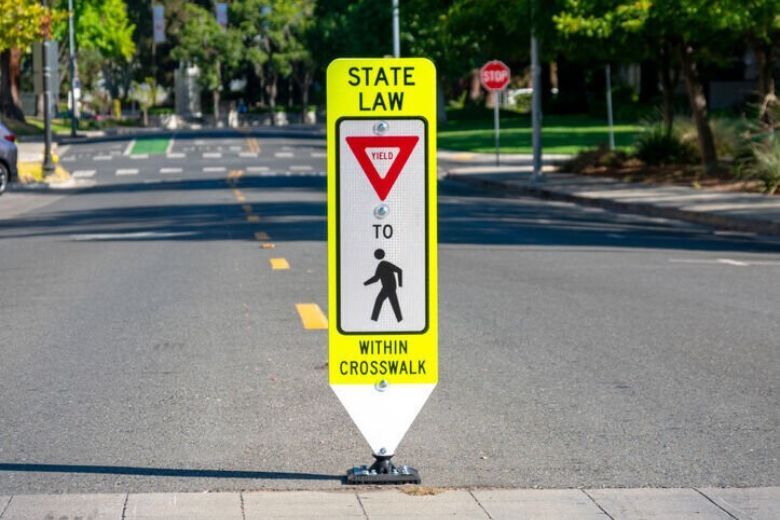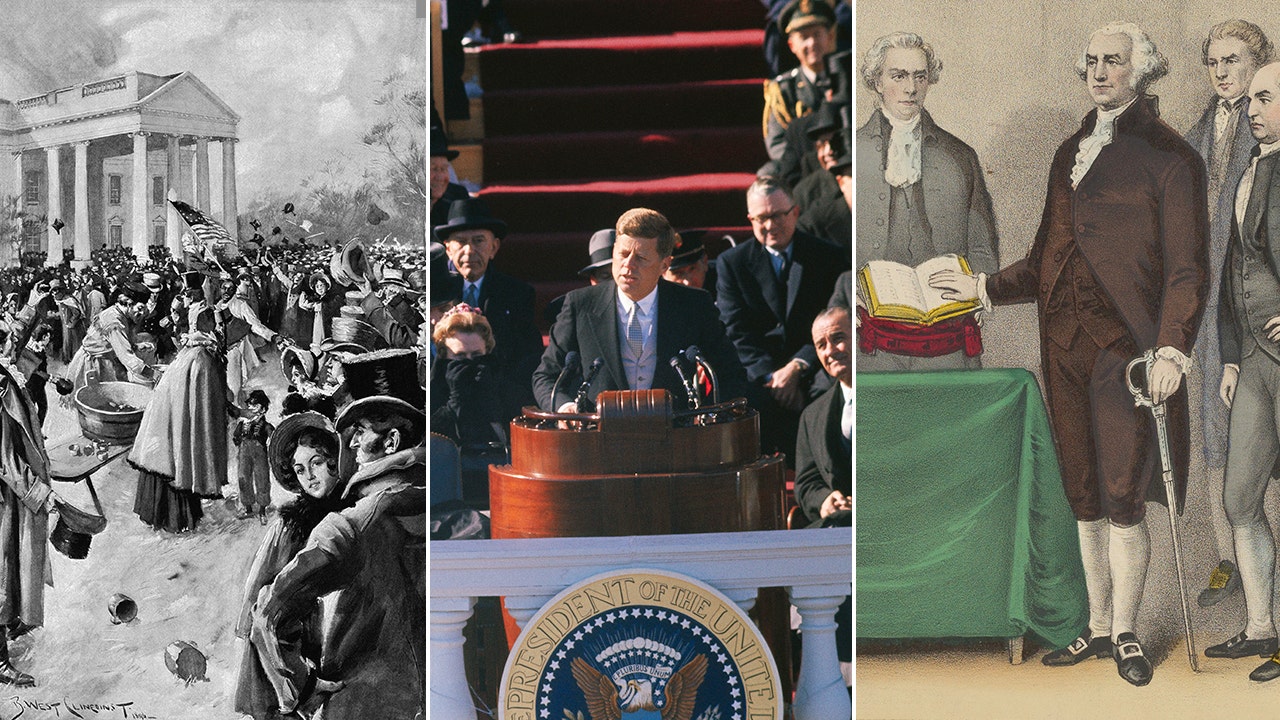North Dakota
Distracted driving lead cause of crashes involving farm equipment, North Dakota Highway Patrol says

DEVILS LAKE — A Sunday, May 28, crash between a passenger vehicle and tractor on U.S. Highway 2 near Devils Lake happened after a driver “misjudged the closing distance” between her car and the tractor, according to the North Dakota Highway Patrol.
The crash,
which left a passenger with life-threatening injuries,
was one of two Memorial Day weekend crashes involving farm equipment on U.S. Highway 2. In Minnesota, a teenage passenger was
airlifted to Fargo with life-threatening injuries
after the vehicle he was riding in collided with a tractor on Monday, May 29.
While the crashes are still under investigation, Sgt. Wade Kadrmas, safety and education officer for the North Dakota Highway Patrol, says distracted driving is the leading cause of collisions with farm equipment on highways.
“Just like anything these days, distractions are huge,” he said.
In 2021, there were 44 crashes involving farm equipment in North Dakota, including one fatal crash, according to North Dakota Highway Patrol data. Five crashes resulted in incapacitating injury, and 12 resulted in non-incapacitating injury. The agency does not collect data for individual highways.
In Minnesota, there were 164 crashes involving farm vehicles across the state in 2022, with two fatalities and 61 injuries. The northwest region of the state, which includes Kittson, Roseau, Lake of the Woods, Marshall, Beltrami, Polk, Pennington, Red Lake, Clearwater, Norman and Hubbard counties, had 13 crashes involving farm equipment in 2022, with three injuries.
Farm equipment tends to be large and heavy, with slow acceleration and stopping times, said Minnesota State Patrol Sgt. Troy Christianson.
“Motorists have to be well aware approaching it that they are traveling at a slower speed,” he said.
On four-lane, divided highways like Highway 2, the difference in speed between motorists traveling at or above the speed limit and slow-moving farm equipment leads to more severe crashes, Kadrmas said. In North Dakota, the posted speed limit on much of U.S. Highway 2 is 70 mph, while farm equipment may be traveling around 35 or 45 mph. In Minnesota, the speed limit on northwest Minnesota portions of Highway 2 is 65 mph.
“If people aren’t paying attention, and they’re not observing that slow-moving vehicle up ahead of them, it doesn’t take much for the distance to close between the two vehicles and a crash to occur,” he said.
Kadrmas has responded to several crashes where there have been no skid marks by a vehicle that hit the farm equipment.
“To me, that’s just an indication that the driver was not paying attention, did not see this huge combine or tractor on the roadway, and ran right into the back of it or sideswiped it,” he said.
Drivers of vehicles and farm equipment both have a part to play in preventing collisions.
“The general traffic needs to be aware of it and be courteous and patient with those type of vehicles,” Kadrmas said. “Then, the individuals moving that type of equipment also need to do their part and be courteous and ensure that their loads are visible.”
Christianson says drivers should only attempt to pass farm equipment when it is safe and legal to do so.
“Use caution when approaching farm equipment and just don’t assume that the farm operator sees you,” he said. “It’s also important if a farmer is traveling on the roadway and there is getting to be a line of cars backed up behind them, they should try to pull over at a field approach or somewhere where it’s safe to just allow the traffic to go by.”
Following the speed limit will help, too, Kadrmas said. The faster vehicles are moving, the quicker they close in on slow-moving farm equipment.

North Dakota
Letter: Legislators are once again putting lipstick on the pig

To the editor,
After watching the smoke and mirrors dog and pony show in Bismarck it is obvious that the Legislature has no intention of reforming the unfair property tax.
No mention was made concerning the unfairness of this tax that severely burdens poor taxpayers, while letting many rich taxpayers off the hook with little to no taxes. Nothing was said about the state totally funding K-12 education, which is mandated by the North Dakota Constitution. If education isn’t funded by the Legislature, all the legislators need to be charged with violating their oath of office and be fined, fired and imprisoned.
Instead, all that is being proposed is to put makeup and lipstick on the pig and tell us they are working on it.
Will they be able to fool the people once again or will the people see that they are once again just putting lipstick on the pig? Time will tell.
Steve Moen
Minot, North Dakota
North Dakota
Deer mice in North Dakota

What is the most abundant mammal in North America? I saw that question used in trivia recently. The answer was deer mouse. I am not so sure about that, in part because deer mouse is used to refer to a genus of mice as well one of the species of the genus. Either way, deer mice are certainly one of the contenders.
There are over a dozen species of small mammals that the casual observer may refer to as mice in North Dakota. That would include the house mouse, deer mice, voles, pocket mice, jumping mice, and shrews. The term deer mouse is used to refer to mice in the genus Peromyscus. Most are gray or reddish brown with a white underbelly, white feet, and comparatively large ears. And they are often characterized as having large “bulging” eyes. Robert Seabloom in his Mammals of North Dakota lists two species of Peromyscus in North Dakota.
What is commonly known as a deer mouse (P. maniculatus), a species of the grasslands, is common and abundant throughout the state. They are around 6 inches long, including a tail about 2.5 inches long. Although juveniles may be gray, adults are usually a brown to grayish-brown. Seabloom also notes that they have “distinctly” bicolored tails which helps in identification.
The deer mouse feeds largely on seeds and insects. Home range for these mice is around 2-3 acres. They are prey to several animals including snakes, hawks, owls, and fox. They are also a major carrier of the hantavirus.
The white-footed deer mouse (P. leucopus) is a species of wooded areas, and as such is less common. It is similar in appearance to the deer mouse but is perhaps a bit larger. Seabloom also notes that their “indistinctly bicolored tail” is a key characteristic in identification.
Like the deer mouse, the white-footed deer mouse feeds largely on seeds and insects. Acorns can also be an important food item. Their home range is less than that of a deer mouse, averaging around one acre
If you are interested in more information on the biology, ecology, and identification of these and other North Dakota mammals, I suggest you check out Mammals of North Dakota by UND professor emeritus Robert Seabloom. First published in 2011, it is now in its second edition.
North Dakota
North Dakota House considers bills on AI in political ads, ‘deepfakes’ • North Dakota Monitor

Artificial intelligence used for political purposes would require a disclaimer under a bill proposed in the North Dakota Legislature.
The House Government and Veterans Affairs Committee held a hearing Friday on House Bill 1167 that would require a “prominent disclaimer” on any political communication or political advertisement created wholly or in part by artificial intelligence tools.
The disclaimer must read: “This content generated by artificial intelligence.”
Bill sponsor Rep. Jonathan Warrey, R-Casselton, said he expects AI use in political communications to become a much bigger issue in the future.
“There are other states taking action on this to provide some protections in place, and I think the overall theme is very sound,” Warrey said.
He added the bill was crafted through consultation with the Secretary of State’s Office and creates a new provision under the Corrupt Practices section of North Dakota Century Code, making any violation punishable by a Class A misdemeanor.
Deputy Secretary of State Sandy McMerty testified in support of the bill. She said AI can be used to help create graphics, write a newsletter and other communication.
However, if AI is used in political communication, she said the public should be informed. McMerty likened the new policy to statements politicians are already required to attach to their political ads that say who paid for the ad.
Terry Effertz, executive director of advocacy group TechND, testified against the bill, telling lawmakers the proposal is too broad.
“The bill, to be honest, is a reaction to hypothetical concerns, rather than a solution to documented harm,” Effertz said. “AI is evolving and hasty legislation in this area could inhibit legitimate uses while failing to address the actual risks.”

Because AI has become widely embedded in digital content and software, it could lead to “disclosure overload,” she said.
“Really what we need to focus on is the fact that deepfakes are the real threat here,” Effertz said.
A separate proposal, House Bill 1320, would outlaw the fraudulent use of deepfake videos and images in North Dakota.
Deepfakes, or videos, images or recordings manipulated by generative AI, have caused concerns about spreading misinformation. The bill would make the creation, possession and release of deepfake videos and images, without the consent of the person featured, a Class A misdemeanor.
Rep. Josh Christy, R-Fargo, the prime sponsor of the bill, said deepfakes are a threat to North Dakotans because it’s become more difficult to determine what is real and what is fake.
He said the intent of his bill is to prevent someone from using someone else’s likeness without permission. The bill is not limited to deepfakes used for political purposes.
“If I’m able to take a video of you, upload it to a service, and then be able to represent you in a way that you don’t want, it’s not a good thing,” Christy said.
A public hearing on the bill is at 11 a.m. Monday in Room 327B at the Capitol. Christy said he plans to play a video of himself reading a portion of the Gettysburg Address in Russian, German and from a female avatar that he programmed though software.
He said he doesn’t want to cross any lines with satire or First Amendment concerns and hopes to get some feedback during the hearing.
“I don’t know where that line is,” he said. “Hopefully the Attorney General’s Office or others will come out for testimony on this and help clarify any amendments.”
The committee did not take immediate action on the bill related to disclosures of AI in political ads. Written testimony on the bill addressing deepfakes can be submitted online until 8 a.m. Monday.
YOU MAKE OUR WORK POSSIBLE.
GET THE MORNING HEADLINES.
-
/cdn.vox-cdn.com/uploads/chorus_asset/file/25822586/STK169_ZUCKERBERG_MAGA_STKS491_CVIRGINIA_A.jpg)
/cdn.vox-cdn.com/uploads/chorus_asset/file/25822586/STK169_ZUCKERBERG_MAGA_STKS491_CVIRGINIA_A.jpg) Technology1 week ago
Technology1 week agoMeta is highlighting a splintering global approach to online speech
-

 Science7 days ago
Science7 days agoMetro will offer free rides in L.A. through Sunday due to fires
-
/cdn.vox-cdn.com/uploads/chorus_asset/file/23935558/acastro_STK103__01.jpg)
/cdn.vox-cdn.com/uploads/chorus_asset/file/23935558/acastro_STK103__01.jpg) Technology7 days ago
Technology7 days agoAmazon Prime will shut down its clothing try-on program
-

 News1 week ago
News1 week agoMapping the Damage From the Palisades Fire
-

 News1 week ago
News1 week agoMourners Defy Subfreezing Temperatures to Honor Jimmy Carter at the Capitol
-
/cdn.vox-cdn.com/uploads/chorus_asset/file/25826211/lorealcellbioprint.jpg)
/cdn.vox-cdn.com/uploads/chorus_asset/file/25826211/lorealcellbioprint.jpg) Technology6 days ago
Technology6 days agoL’Oréal’s new skincare gadget told me I should try retinol
-
/cdn.vox-cdn.com/uploads/chorus_asset/file/25832751/2192581677.jpg)
/cdn.vox-cdn.com/uploads/chorus_asset/file/25832751/2192581677.jpg) Technology3 days ago
Technology3 days agoSuper Bowl LIX will stream for free on Tubi
-

 Business4 days ago
Business4 days agoWhy TikTok Users Are Downloading ‘Red Note,’ the Chinese App



















